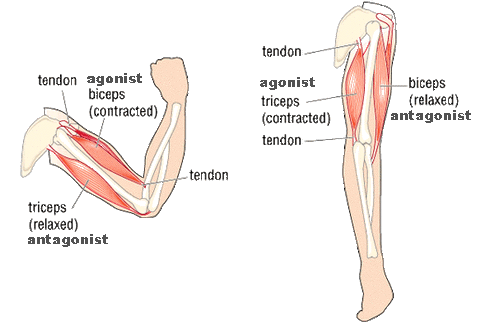
We’ve all experienced it – that sudden, sharp pain in our lower back, knees, shoulders, or even our feet. It’s not something we want to live with, and our first instinct is to make it vanish, and rightly so. But what’s the next step after the pain subsides?
Do we pop a painkiller, or perhaps schedule an appointment for an epidural steroid injection? While these remedies might provide temporary relief, they often address the symptoms, not the underlying problem. That pain is a signal, a cry for help from our body, trying to tell us that something needs attention.
Understanding the Root Cause:
For those without a history of injury or accident, the culprit might be lurking in the form of imbalances, stiffness, or weaknesses in our muscles. These issues often go hand in hand, creating a perfect storm for discomfort. The pain we feel is the body’s way of saying, “Hey, something’s not right here!”

Agonist, Antagonist, and Synergist Muscles:
To comprehend how muscle imbalances contribute to pain, we need to understand the role of agonist, antagonist, and synergist muscles.
Agonist muscles are the primary movers in any given exercise. For example, during a bicep curl, the bicep muscle is the agonist.
Antagonist muscles are responsible for opposing the movement produced by the agonist. In the same bicep curl, the triceps muscle serves as the antagonist.
Synergist muscles assist the agonist in its movement. In the bicep curl, various shoulder and forearm muscles would be considered synergists.
Creating Muscle Balance for Spinal and Joint Health:
For optimal spinal and joint health, it’s crucial that these three groups of muscles work in harmony. When there’s an imbalance, such as stronger agonists compared to antagonists or weak synergist muscles, it can lead to improper posture and alignment, increasing the risk of pain and injury.
A common example of this imbalance is when the chest muscles (agonists) are overdeveloped compared to the upper back muscles (antagonists). This imbalance can pull the shoulders forward, leading to poor posture and potential neck and shoulder pain.
A Solution Through Fitness:
The good news is that many of these problems can be addressed and even prevented through fitness and targeted exercises. It’s about more than just temporarily alleviating the pain; it’s about fixing the root cause. That’s where a qualified personal trainer can be your guide.
Consider this: fitness isn’t just about lifting weights or running marathons. It encompasses exercises that incorporate stretching and muscle strengthening, designed to realign your body and bolster it against pain. It’s a holistic approach to health and well-being.
Your Path to a Pain-Free Life:
At Hebe Fitness, we believe in a comprehensive approach to health. We offer a free consultation to help you understand the root causes of your pain, including muscle imbalances, and we use our knowledge and skills, combined with common sense, to design a personalized plan that addresses your unique needs.
No more masking the pain with temporary fixes. We want to help you reclaim your life, free from discomfort. Let’s work together to eliminate the root causes, create muscle balance, and set you on the path to a pain-free life.

Conclusion:
In summary, pain in your lower back, knees, shoulders, or feet is not just an inconvenience to be dealt with temporarily. It’s a signal from your body that something needs attention. Understanding and addressing the root causes, including muscle imbalances, through fitness and exercise is the key to living a pain-free life. We’re here to help you on that journey. Don’t hesitate to reach out and take advantage of our free consultation to start your path towards a healthier, pain-free you.



